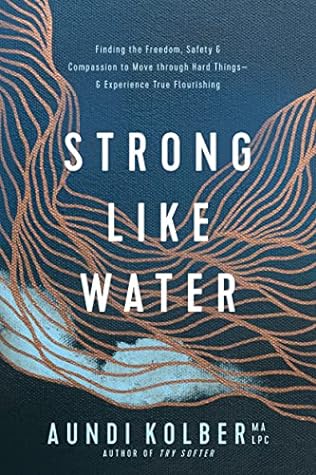More on this book
Kindle Notes & Highlights
by
Aundi Kolber
Read between
March 17 - March 30, 2025
pleasant smells have the potential to soothe, certain ones can be extremely triggering since they have a direct line to our amygdala, where much of our trauma is encoded.[1]
there is no bypassing the information from our bodies. We cannot “logic” ourselves into safety or out of trauma. Telling our bodies that we’re safe and feeling safe are two very different things.
before she could even have a cognitive thought, her body worked to protect her.
It’s important to remember that our experience of safety is perceived and not necessarily literal. This is why, even when the world is tumultuous or hard, it’s possible for us to work toward felt safety with ourselves and others.
When we learn to become aware of our neuroception, we gain perception on the reality of our circumstance and can act accordingly.[7]
Instead of situational strength and/or our trauma responses running the show without our knowledge, perception helps us work with our body to bring it back into our window of tolerance.[8] Additionally, with care and attention, our body gains capacity to more accurately assess the risk we are facing in the here and now rather than being overly influenced by experiences from the past.[9]
Your body is constantly shifting and adapting to help keep you safe. I cannot overstate the foundational experiences of safety and supportive connections to our healing journey.
every moment of attunement, regulation, and repair we experience in childhood as well as in adulthood teaches our vagal brake how to respond.[16]
bodies with underdeveloped vagal brakes are like automobiles with supercharged acceleration but no brakes. Once the gas is pushed, our bodies may skyrocket out of our WOT and into hyperarousal even at the smallest of scares
Feeling unsafe shapes the brain
our innate plasticity. This ability to shift, change, and grow is a beautiful gift that our Creator gave us, facilitating many important processes in our body.
Trauma is not (and never was) a gift. But our bodies’ ability to adapt so that we can survive? That’s the gift; that’s grace.
The many instances of bravery, resilience, and strength she experienced through the years didn’t seem to stick. This wasn’t because she wasn’t “choosing” to experience goodness and growth; instead, her body had unconsciously decided it was not safe to savor them.
This is why I grieve when I hear people say they “had to become an adult” before their time. This is why hearing that you’re “so mature” doesn’t always feel like a compliment. Our bodies are designed to receive a certain level of care and support, and it’s traumatic when we don’t.
Thus, compassionate resourcing is learning to have a posture of coming alongside and remaining responsive to the parts of ourselves and our stories that do not yet feel safe.
“compassionate with-ness,” a posture through which others convey that they are attuned to us—that they resonate with, understand, and share our feelings—and that we can attune to them and to others.
Suffering with someone while being attuned to them is powerful; it conveys a sacred solidarity. This with-ness also speaks to the way our nervous systems and bodies are created to sync with each other as we experience co-regulation.
“with-ness” implies that the person has resolved to be in it with us, right down in the dirt and mire of whatever we’re going through.
Often the caregiver will meet their children’s physical needs but allow emotional needs to go unmet. And as a result, these kiddos learn that they must deal with difficult experiences or emotions on their own.


